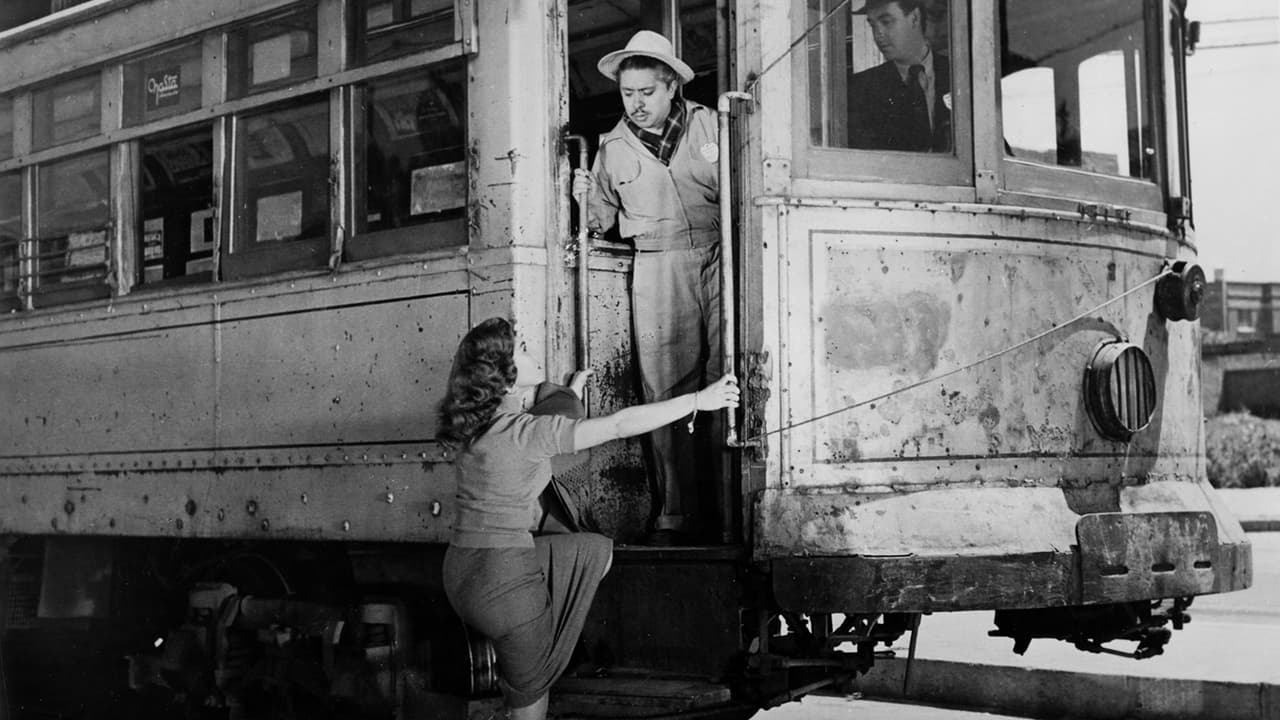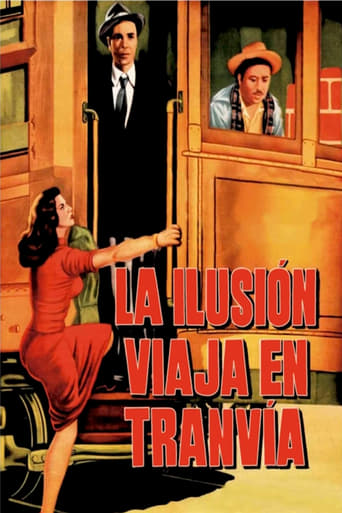

On first viewing – again, as part of that 2007 Bunuel/NFT retrospective – I had found this to be an enjoyable but rather insubstantial comedy; on this revisit, my opinion has not changed about this minor work from the celebrated Spanish director. Indeed, I was surprised to learn (from the opening credits) that Bunuel was not even involved in the screen writing process of this one – although, I do not think it is a coincidence that the film's comic highlight is a wonderful "Garden of Eden" pageant sequence early on (in which the three protagonists playing God, Adam and a swim-suited Eve, are tormented by a heavily-horned Lucifer wearing a shirt sporting the word "serpent"!).The film is fairly similar to Bunuel's earlier (and superior) Mexican 'road movie' ASCENT TO HEAVEN aka Mexican BUS RIDE (1952) in that it is set, for the most part, on a means of public transportation. Besides, its plot line of an ancient vehicle being taken for one last ride before ending up in a scrapheap also harks back to such classic comedies as Harold Lloyd's SPEEDY (1928) and Ealing's practically contemporaneous THE TITFIELD THUNDERBOLT (1953). Incidentally, Bunuel's cinematic idol Fritz Lang, made his own railroad movie that same year: the noir-ish melodrama HUMAN DESIRE (which I own but have yet to watch) – itself a remake of Jean Renoir's LA BETE HUMAINE (1938).As usual with Bunuel's films from this period, it starts with a faux-documentary narration and, in this case, amusingly concludes on a "this was just one of a thousand stories" line a' la Jules Dassin's seminal noir THE NAKED CITY (1948). The director's depiction of the downtrodden Mexican villagers' everyday life (culminating in a riot when the smuggling of corn as fertilizer is accidentally discovered by one of the bumbling protagonists) brought on comparisons with Italy's then-current Neo-realist movement – something which Bunuel readily denied. Indeed, while the story could well have been inspired by a similarly liberating ride through the streets of Paris made by the Surrealist movement in 1931, the truth is that the film was commissioned by a nascent Mexican public transport company to counter the bad press caused by an accident they had had the previous year!Two regular actors from Bunuel's work in Mexico – the lovely Lilia Prado and the amiably rotund Fernando "Mantequilla" Soto (as a streetcar conductor named Tarrajas) – also appear here, alongside Carlos Navarro (as Prado's streetcar mechanic boyfriend) and Agustín Isunza (as Papa Pinillos, a nosy ex-railroad employee). The perennially frustrated attempts of the two company employees to take back the streetcar they stole before its absence is discovered is paralleled by Papa Pinillos' constantly dismissed claims of this very theft to his pompous former employers.Among the commuters who inadvertently get to make use of the runaway streetcar (the film's alternate title) are: a schoolmistress with her classroom of unruly children who are, eventually, stranded on a film set (an orphan in their midst is told that the long-legged starlet being made-up is his long-lost mother!); two elderly ladies carrying a statue of Jesus Christ in "Ecce Homo" guise; a couple of 'penniless' politicians; a clueless American tourist who mistakes the protagonists' reluctance to accept fare – which would have aggravated their misdemeanor – as "Communist" behavior (possibly, former party member Bunuel's barbed comment on the "Red Scare" then currently scourging through Hollywood); and, most memorably, slaughterhouse workers carrying their slabs of meat along as 'luggage'! I cannot forget to mention that, very early on in the film, there is also a throwaway laugh-out-loud moment when a billboard reads: "Well so what?"P.S. Surprisingly enough, the film played without a glitch on my Philips DVD player which, usually, has a lot of trouble dealing with DivX files!
... View MoreTwo streetcar conductors whose streetcar is set to be dismantled sneak into the station late one night to take it for one last spin. They spend all night and most of the next day having small adventured throughout Mexico City. Agustin Isunza is the film's standout as an old man, Papa Pinillos, who worked for the streetcar company most of his life. He was laid off a while back, but he does little with his time besides get on random streetcars to see if their drivers are competent. When he jumps on the 133, he quickly realizes that it's stolen and he spends the rest of the film desperately trying to get the company to believe him. It's a fun movie and very charming. Not a necessary Bunuel film, but fans should certainly catch it. 8/10.
... View MoreIgnore the title and opening and closing narration that imply that there is more here than meets the eye, which is a humorous look at life in Mexico City in the early 1950's. Very nice location shooting.Best scene: the pageant of the fall of Satan and of Adam and Eve.Best actor: Agustín Isunza as a retired motorman trying to report that the street car has been stolen.
... View MoreTo all Buñuel fans that haven't seen this one, let me tell you that the big laugh comes at the end and keeps you laughing for a long time.after the movie is over. Very unusual for Buñuel, but nevertheless very realistic and enjoyable. For the delightful laughing effect he produced at the end, I rated 9.5.
... View More